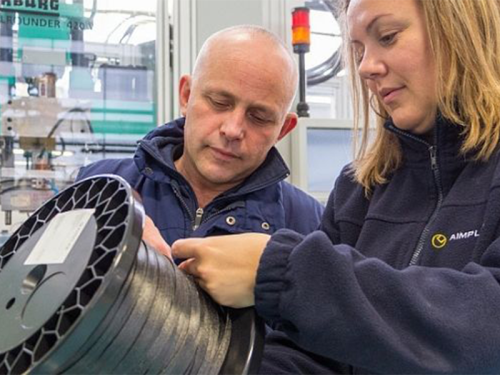The cars of tomorrow: Hyundai and Kia's Uni Wheel revolutionize electric vehicles
.png)
Hyundai and Kia's Uni Wheel innovation relocates vital automotive components to the wheel hubs, promising increased performance and a radical change to the interior of electric vehicles, setting a new standard for future mobility.
Top car manufacturers constantly innovate, striving to advance beyond the ordinary on the roads. Their R&D divisions relentlessly craft fresh solutions, particularly focusing on electric vehicles whose sales in Spain lag behind projections.
Although electric cars still retain the 'inherited' design of combustion engine models, there are significant potential improvements that could redefine the interior layout. Hyundai and Kia have unveiled the Universal Wheel Drive System, or Uni Wheel, aiming to relocate key propulsion components into the wheel hub's space, as stated in their official press release from a recent event in Seoul.
At the Uni Wheel Tech Day, initial details emerged about this groundbreaking propulsion system, but an official production date remains unconfirmed. Jongsool Park, lead researcher at Hyundai Motor Group's Institute of Advanced Technology Development, expressed enthusiasm: "We're introducing innovative ideas that could reshape the future mobility market."
While Mercedes plans to integrate motors into wheels in the EQG SUV by 2024, Hyundai and Kia's approach holds distinct qualities. Their goal is to optimize vehicle interiors for improved autonomy, capacity, and flexibility. Traditionally, power in gasoline or diesel cars transfers through transmissions, driveshafts, and joints to the wheels. In contrast, electric cars only require a motor and reducer, but Uni Wheel completely shifts this paradigm by relocating the main propulsion components into the wheel hubs, reducing driveshaft length.
This innovation enables flat vehicle floors, revolutionizing internal car architecture. It also opens doors for purpose-built prototypes, like Kia's Electric Purpose-Built Vehicles (PBVs), expected on roads by 2025.
Uni Wheel integrates systems within the wheels—a sun gear, four pinion gears, and a surrounding ring gear—to transmit power generated by the motor. This setup improves efficiency and durability compared to conventional transmissions, providing seamless power transmission regardless of wheel movement.
The system, when combined with electronic pneumatic suspension, allows height adjustment for stability on uneven roads or enhanced power and stability on highways at high speeds.
Hyundai and Kia's patented system offers a high reduction ratio, enabling increased torque with smaller electric motors. Additionally, independent torque control at each wheel promises improved driving and steering stability.
Beyond rearranging interior space, incorporating larger batteries could significantly extend the range of electric vehicles, addressing a primary limitation compared to internal combustion engine vehicles.
The production launch date for this revolutionary transmission remains undisclosed. Meanwhile, Korean manufacturers persist in refining the reduction ratio, lubrication, and cooling systems for this innovative technology.
Reference
El invento que cambiará los coches eléctricos por completo: integra motor y transmossión en las ruedas | El Español-Omicrono. Retrieved December 9th, 2023 from: https://www.elespanol.com/omicrono/tecnologia/20231209/invento-cambiara-coches-electricos-completo-integra-motor-transmision-ruedas/814668647_0.html
Hyundai Motor and Kia Unveil Paradigm-Shifting ‘Uni Wheel’ Drive System to Transform Mobility Design | Hyundai. Retrieved November, 29th, 2023 from: https://www.hyundai.news/eu/articles/press-releases/hyundai-and-kia-unveil-uni-wheel-drive-system.html
The world's first drive system concept | Universal Wheel Drive System | Youtube – Hyundai Motor Group. Retrieved November 29th, 2023 from: https://www.youtube.com/watch?v=Nd6C0y8xc20
.png)

